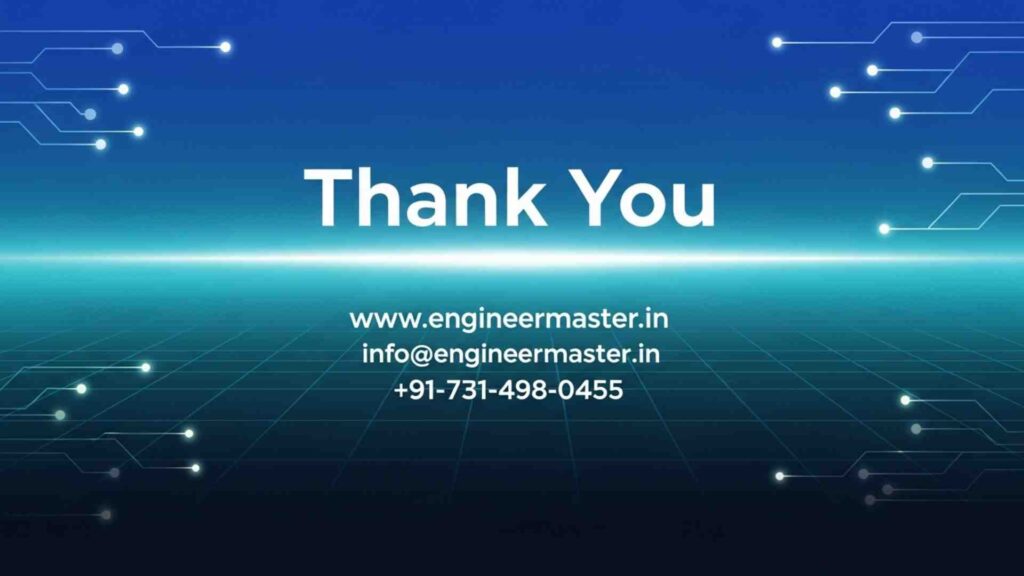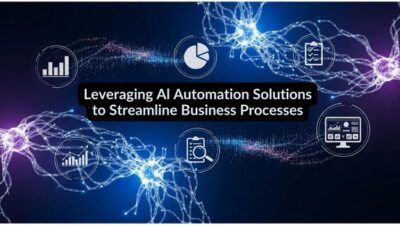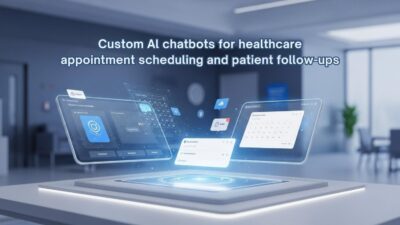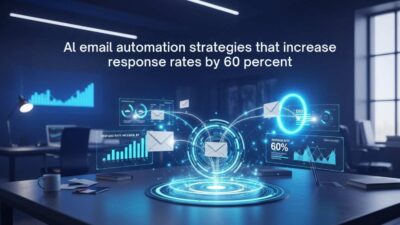Introduction
TL;DR Service firms struggle with consistent client communication. Partners and consultants spend days on client work. Marketing falls to the bottom of priority lists. Newsletters get delayed for months at a time.
Your pipeline dries up when communication stops. Prospects forget about your expertise quickly. Existing clients don’t think of you for additional services. Referrals never materialize because you stay invisible.
Manual marketing efforts consume precious billable hours. Someone needs to write emails individually. Social media posts require daily attention. Following up with leads demands constant vigilance.
Marketing automation for service firms solves these challenges systematically. The technology maintains consistent client touchpoints automatically. Personalized messages reach prospects at optimal times. Your firm stays top-of-mind without draining partner time.
Professional services face unique marketing challenges. Long sales cycles require sustained nurturing. Relationship building happens over months or years. Technical expertise must shine through every communication.
Understanding marketing automation for service firms reveals transformative possibilities. The systems segment audiences based on service needs. They deliver relevant content that demonstrates expertise. Engagement metrics show which prospects need personal attention.
This comprehensive guide explores how automation transforms client relationships. You’ll discover strategies that leading firms use successfully. Revenue grows while marketing effort decreases. Your expertise reaches more prospects than ever before.
Table of Contents
The Marketing Challenge for Professional Service Firms
Billable hours dominate partner priorities understandably. Client work generates immediate revenue. Marketing activities seem like distant investments. The urgent always crowds out the important.
Relationship-based selling requires consistent touchpoints over time. Prospects need multiple exposures before engaging. Trust builds gradually through demonstrated expertise. One-off communications rarely convert prospects.
Small marketing teams can’t scale personalized outreach. Individual emails to hundreds of contacts becomes impossible. Content creation consumes weeks of effort. Tracking engagement happens sporadically if at all.
Expertise gets trapped in individual partner minds. Knowledge sharing across the firm happens informally. Prospects never see the full depth of capabilities. Cross-selling opportunities hide in information silos.
Long sales cycles test patience and persistence. Months pass between initial contact and engagement. Prospects go silent during their decision processes. Manual follow-up systems fail under sustained timelines.
Measuring marketing effectiveness proves nearly impossible. Attribution becomes guesswork without proper systems. Partners can’t identify which activities generate results. Marketing budgets lack justification through clear ROI.
Content creation demands subject matter expertise. Generic marketing messages fail in professional services. Thought leadership requires deep industry knowledge. Creating sufficient quality content overwhelms small teams.
Understanding Marketing Automation for Service Firms
Marketing automation for service firms uses technology to nurture client relationships systematically. The platforms send targeted messages based on prospect behavior. Email sequences deliver value over extended timeframes. Personalization happens at scale without manual effort.
Lead scoring identifies prospects showing buying signals. The system tracks website visits and content downloads. It assigns points for engagement activities. Partners focus attention on warmest opportunities.
Segmentation groups contacts by service needs and characteristics. Law firms separate corporate from litigation prospects. Consulting firms distinguish by industry vertical. Messages become relevant to specific audience segments.
Workflow automation triggers actions based on predefined conditions. Someone downloads a whitepaper and receives related content automatically. A prospect goes quiet and gets a re-engagement sequence. The system operates continuously without supervision.
CRM integration ensures contact information stays synchronized. Marketing activities update client records automatically. Partners see full engagement history before calls. Data flows between systems seamlessly.
Analytics dashboards reveal campaign performance clearly. Open rates and click rates show content resonance. Conversion tracking connects activities to revenue. Marketing decisions gain data-driven foundations.
Multi-channel orchestration coordinates email, social media, and advertising. The system maintains consistent messaging across touchpoints. It adjusts channel mix based on individual preferences. Prospects experience cohesive engagement regardless of channel.
How Marketing Automation Transforms Client Communication
Personalized email sequences maintain consistent touchpoints automatically. New contacts enter nurturing workflows immediately. They receive relevant content based on expressed interests. Relationship building happens without manual intervention.
Behavioral triggers send timely messages based on actions. Someone visits your pricing page and receives service information. A prospect reads multiple blog posts and gets a consultation offer. Relevance increases through intelligent timing.
Anniversary and milestone messages strengthen relationships. Client engagement anniversaries trigger appreciation notes. Project completion dates prompt testimonial requests. Personal touches happen systematically rather than sporadically.
Newsletter automation ensures regular thought leadership delivery. Content gets scheduled weeks or months in advance. Subscribers receive consistent value without last-minute scrambles. Your expertise stays visible continuously.
Event promotion workflows maximize attendance and engagement. Registration triggers confirmation and preparation emails. Reminder sequences reduce no-show rates. Post-event follow-up happens automatically.
Re-engagement campaigns revive dormant relationships. Inactive contacts receive targeted win-back sequences. The system identifies optimal timing for outreach. Cold prospects warm up through strategic messaging.
Drip campaigns educate prospects over extended periods. Complex service offerings get explained gradually. Each message builds on previous communications. Understanding deepens through systematic education.
Lead Nurturing Strategies for Professional Services
Educational content establishes expertise credibly. Whitepapers demonstrate deep subject knowledge. Case studies show successful client outcomes. Webinars provide interactive learning opportunities.
Pain point targeting addresses specific client challenges. Content speaks directly to prospect struggles. Solutions get presented through your service lens. Relevance creates engagement and trust.
Multi-touch sequences recognize buying cycle complexity. Early-stage prospects receive awareness content. Middle-stage contacts get comparison information. Late-stage leads see proof points and testimonials.
Personalization variables make messages feel individual. Names, companies, and industries appear throughout. Service-specific content matches expressed interests. Generic blasts transform into tailored communications.
Social proof integration builds credibility systematically. Client testimonials appear in email sequences. Industry recognition gets highlighted appropriately. Awards and certifications reinforce expertise claims.
Call-to-action progression guides prospects toward engagement. Early messages offer low-commitment content downloads. Later communications suggest consultations and assessments. The path to conversion becomes clear.
Timing optimization ensures messages arrive when prospects are receptive. Send time algorithms identify optimal delivery windows. Frequency controls prevent message fatigue. Engagement improves through intelligent scheduling.
Marketing Automation for Service Firms in Client Retention
Onboarding sequences welcome new clients systematically. Welcome messages set expectations clearly. Resource guides help clients maximize value. Early relationship building happens automatically.
Check-in campaigns maintain proactive communication. Scheduled touchpoints ask about satisfaction levels. They identify concerns before they escalate. Retention improves through attentive monitoring.
Cross-sell workflows identify expansion opportunities. Service completion triggers related offering information. Usage patterns suggest complementary services. Revenue per client grows through strategic suggestions.
Content personalization demonstrates ongoing attention. Clients receive industry-specific insights regularly. Regulatory updates arrive automatically when relevant. Value delivery continues beyond active projects.
Renewal reminders ensure seamless contract continuations. Advance notice gives clients planning time. The system tracks renewal dates automatically. Revenue retention increases through timely outreach.
Feedback collection happens at optimal moments. Post-project surveys capture fresh impressions. The system analyzes responses for improvement opportunities. Client voice informs service evolution.
Appreciation campaigns strengthen emotional connections. Holiday greetings arrive personally from partners. Anniversary messages celebrate relationship milestones. Loyalty deepens through consistent recognition.
Measuring Engagement and ROI
Email metrics reveal content effectiveness clearly. Open rates show subject line resonance. Click rates indicate topic interest. Both metrics guide content strategy refinement.
Website behavior tracking connects marketing to pipeline. The system shows which content prospects view. It identifies companies researching your services. Sales teams gain intelligence for conversations.
Lead scoring quantifies prospect readiness objectively. Point accumulation shows engagement intensity. Thresholds trigger partner notification automatically. Time investment focuses on qualified opportunities.
Attribution modeling connects marketing activities to revenue. First-touch attribution shows acquisition sources. Multi-touch models reveal nurturing impact. Marketing ROI becomes calculable and defensible.
Conversion rate analysis identifies friction points. The system shows where prospects drop off. A/B testing improves performance systematically. Optimization happens through data rather than guessing.
Pipeline velocity measurements show marketing impact on sales cycles. Nurtured leads close faster than cold contacts. Marketing automation for service firms accelerates revenue realization. Time-to-close decreases measurably.
Client lifetime value tracking proves retention effectiveness. Long-term revenue per client increases. Cross-sell success rates improve over time. Investment justification becomes straightforward.
Content Strategy for Automated Marketing
Pillar content establishes topical authority comprehensively. Major topics get explored through detailed resources. These become nurturing campaign centerpieces. Smaller content pieces support and extend pillars.
Content mapping aligns resources to buyer journey stages. Awareness content educates about problems. Consideration content compares solution approaches. Decision content proves your superiority.
Repurposing maximizes content investment efficiency. Webinars become blog posts and social updates. Whitepapers generate email series content. Single creation efforts yield multiple assets.
Evergreen content provides lasting value. Fundamental concepts remain relevant indefinitely. These pieces anchor long-term nurturing sequences. Time investment pays dividends for years.
Topical content demonstrates current expertise. Industry trend analysis shows you stay informed. Regulatory update commentary proves practical value. Timeliness complements evergreen foundations.
Interactive content generates higher engagement. Assessments and calculators provide personalized value. Quizzes make learning entertaining. Interactivity creates memorable experiences.
Video content resonates with modern audiences. Partner interviews showcase expertise authentically. Explainer videos simplify complex concepts. Visual content breaks through crowded inboxes.
Implementation Strategies for Service Firms
Needs assessment identifies automation priorities clearly. Document current marketing challenges comprehensively. List desired capabilities and outcomes. Prioritize based on impact and feasibility.
Platform selection requires evaluating multiple vendors. Compare features against your specific requirements. Verify integration with existing systems. Request demonstrations with realistic scenarios.
Data migration prepares contact information properly. Clean existing databases before importing. Segment contacts during migration process. Establish data governance policies immediately.
Workflow design maps automated customer journeys. Document touchpoints for each prospect segment. Determine trigger conditions and timing. Create branching logic for different scenarios.
Content inventory catalogs available marketing assets. List all whitepapers, case studies, and blog posts. Identify gaps in journey coverage. Plan content creation to fill holes.
Team training ensures effective platform utilization. Marketing staff needs comprehensive system knowledge. Partners learn how to interpret engagement data. Everyone understands their role in automation success.
Pilot programs validate workflows before full deployment. Test with small contact segments initially. Monitor results and gather feedback. Refine approaches based on pilot learning.
Marketing Automation for Service Firms Across Specialties
Law firms nurture practice area-specific prospects separately. Corporate clients receive M&A and compliance content. Litigation prospects get case outcome information. Practice specialization shines through targeted messaging.
Accounting firms segment by service type and business size. Tax prospects receive deadline reminders and strategy tips. Audit clients get compliance update notifications. Business advisory contacts see growth-focused content.
Consulting firms personalize by industry vertical. Healthcare consultants share regulatory insights. Technology consultants discuss digital transformation. Industry expertise becomes evident through relevant content.
Architecture and engineering firms showcase project types. Commercial prospects see retail and office projects. Residential contacts view home designs. Portfolio presentation matches prospect interests.
Financial advisory firms segment by wealth level and life stage. Retirement planning content reaches appropriate age groups. Business succession information targets entrepreneurs. Personalization reflects client circumstances.
Marketing agencies demonstrate capabilities through channel expertise. SEO prospects learn about search optimization. Social media contacts see engagement strategies. Service breadth becomes apparent through diverse content.
Overcoming Common Implementation Challenges
Content creation bandwidth limits automation potential. Service firms lack dedicated content teams. Partners resist time investment in writing. Outsource content creation to specialized agencies.
Technical complexity intimidates non-marketing partners. Platform interfaces seem overwhelming initially. Training requirements appear burdensome. Choose user-friendly systems with strong support.
Integration difficulties delay full implementation. Legacy CRM systems lack modern connectivity. Data synchronization requires technical expertise. Plan integration work carefully with IT support.
Personalization requirements exceed available data. Effective segmentation demands detailed contact information. Historical data may be incomplete or inaccurate. Commit to ongoing data enrichment processes.
Measuring success proves difficult without baselines. Firms lack historical performance metrics. Attribution becomes complicated in long sales cycles. Establish measurement frameworks before launch.
Partner buy-in requires demonstrating clear value. Busy professionals resist new processes. They question ROI of marketing investments. Start with quick wins that prove value rapidly.
Budget constraints limit platform choices. Comprehensive solutions seem expensive initially. Subscription costs create ongoing commitments. Calculate total cost against manual effort savings.
Advanced Automation Strategies
Predictive lead scoring uses AI for qualification. Machine learning analyzes successful conversion patterns. It predicts which prospects will engage. Accuracy improves continuously through outcomes analysis.
Dynamic content personalization customizes messages automatically. Email content changes based on recipient characteristics. Website experiences adapt to visitor profiles. Relevance maximizes without creating multiple assets.
Multi-channel attribution tracks touchpoint contributions. The system shows how channels work together. It allocates credit appropriately across interactions. Marketing mix optimization becomes possible.
Account-based marketing targets high-value prospects intensively. Automation coordinates outreach to buying committee members. Content addresses different stakeholder concerns. Enterprise deals close through orchestrated engagement.
Progressive profiling gathers information gradually. Each interaction requests small additional details. Contact records enrich over time. Form abandonment decreases through reduced friction.
Lifecycle stage automation adjusts messaging automatically. The system recognizes progression through sales funnel. Content sophistication increases with prospect maturity. Communications remain appropriate to readiness level.
Integration with sales tools creates seamless handoffs. Hot leads trigger CRM task creation automatically. Sales teams receive context-rich prospect information. Collaboration between marketing and business development improves.
Future Trends in Service Firm Marketing
Artificial intelligence will personalize at unprecedented levels. Systems will generate custom content for individuals. Messaging will adapt in real-time to responses. Personalization will feel genuinely one-to-one.
Conversational marketing will engage prospects interactively. Chatbots will qualify leads through dialogue. They’ll schedule consultations automatically. Initial engagement will happen instantly.
Video personalization will scale individual outreach. Technology will insert names and details into videos. Partners will record once and reach thousands. Personal touch will combine with automation efficiency.
Voice technology will create new engagement channels. Smart speakers will deliver audio content. Voice search will require content optimization. Marketing automation for service firms will extend beyond text.
Blockchain will verify credentials and expertise. Professional certifications will live on distributed ledgers. Clients will validate qualifications instantly. Trust will build through transparent verification.
Augmented reality will showcase service capabilities. Virtual office tours will impress prospects. Interactive service demonstrations will educate effectively. Immersive experiences will differentiate firms.
Frequently Asked Questions
What is marketing automation for service firms?
Marketing automation for service firms uses technology to nurture client relationships systematically. The platforms send personalized messages based on prospect behavior. Email sequences deliver value automatically over time. Lead scoring identifies prospects showing buying signals. Segmentation ensures relevant messaging to different audiences. CRM integration keeps contact information synchronized. Analytics reveal which activities generate results. The technology maintains consistent communication without constant manual effort.
How does marketing automation differ from email marketing?
Email marketing sends individual campaigns manually. Marketing automation orchestrates sequences that trigger automatically. Email marketing treats all recipients similarly. Automation personalizes based on behavior and characteristics. Email marketing requires constant hands-on management. Automation operates continuously with initial setup. Email marketing struggles to scale personalization. Automation makes individual relevance possible for thousands. The difference lies in sophistication and systematic operation.
What results can service firms expect?
Firms typically see 20% to 40% increases in qualified leads. Email engagement rates improve by 50% to 100%. Sales cycle times decrease by 15% to 30%. Client retention rates climb by 10% to 25%. Revenue per client grows through better cross-selling. Marketing ROI becomes measurable and defensible. Results vary by implementation quality and consistency. Most firms achieve positive ROI within 12 to 18 months.
How long does implementation take?
Basic implementation completes in six to eight weeks. This includes platform setup and initial workflows. Content creation often extends timelines substantially. Comprehensive implementations require three to six months. Integration with existing systems adds complexity. Team training and adoption take ongoing effort. Pilot programs should run for at least one month. Full optimization continues over the first year.
What does marketing automation cost?
Platform costs range from $500 to $5,000 monthly. Price depends on contact database size and features. Implementation services add $5,000 to $50,000. Content creation requires budget or internal resources. Most service firms invest $20,000 to $100,000 first year. Ongoing costs stabilize around $1,000 to $3,000 monthly. ROI typically exceeds investment within 18 months. Calculate current marketing inefficiency costs for comparison.
Do we need a marketing person to run automation?
Someone must manage the system strategically. Part-time attention suffices for smaller firms. Larger firms benefit from dedicated marketing roles. Partners can oversee with proper training. Many firms hire fractional marketing directors. Agencies provide outsourced automation management. The platform reduces execution time substantially. Strategic thinking and content creation remain human responsibilities.
How do we create enough content?
Start by inventorying existing materials comprehensively. Repurpose presentations and articles into new formats. Record partner expertise through interviews. Curate relevant third-party content carefully. Outsource creation to industry-specialized writers. Build content libraries gradually over time. Quality matters more than quantity initially. Evergreen content provides lasting value.
Will automation make communication feel impersonal?
Poor implementation creates generic experiences. Done well, marketing automation for service firms increases personalization. Messages become more relevant to recipient interests. Timing improves through behavioral triggering. Personalization variables add individual touches. Partners focus personal attention where it matters most. Technology handles scale while preserving authenticity. Balance automation with genuine human interaction.
Read More:-Optimising Back-Office Workflows with Engineering and Automation Solutions
Conclusion

Marketing automation for service firms transforms client engagement fundamentally. The technology maintains consistent communication without draining billable hours. Personalized messages reach prospects at optimal times. Your expertise stays visible throughout long sales cycles.
Professional service firms face unique marketing challenges. Relationship building requires sustained effort over months. Technical expertise must shine through every touchpoint. Manual approaches can’t scale to necessary communication volumes.
Implementation requires thoughtful planning and execution. Platform selection matters tremendously to outcomes. Content creation demands investment in quality resources. Team training ensures effective system utilization.
Results materialize across multiple dimensions simultaneously. Lead generation increases through consistent nurturing. Client retention improves via proactive communication. Cross-selling succeeds through targeted messaging.
Measuring success proves value quantitatively. Email engagement rates show content resonance. Pipeline velocity demonstrates sales cycle acceleration. Attribution modeling connects marketing activities to revenue.
Starting small makes sense for cautious firms. Pilot one nurturing campaign before expanding. Learn from initial results and feedback. Scale successful approaches gradually.
The competitive landscape demands consistent marketing. Prospects research extensively before engaging. Firms maintaining visibility win more opportunities. Silence equals invisibility in modern markets.
Your expertise deserves broader audience reach. Clients need regular reminders of your capabilities. Prospects require education about service value. Automation makes both possible without overwhelming partners.
Future developments will enhance capabilities further. Artificial intelligence will personalize at new levels. Multi-channel orchestration will become more sophisticated. Early adopters will maintain competitive advantages.
Take the first step toward automated marketing today. Audit current communication gaps and challenges. Research platforms serving professional service firms. Calculate potential ROI using realistic assumptions.
Implementation timelines mean decisions today affect results months ahead. Waiting costs opportunities through continued invisibility. Client expectations rise regardless of your capabilities. The gap between leaders and followers widens continuously.
Your partners deserve marketing systems that work automatically. Clients expect consistent value and communication. Your firm needs sustainable lead generation. Marketing automation for service firms delivers all outcomes simultaneously.
Start evaluating platforms and approaches now. Request demonstrations from leading vendors. Talk to firms in your specialty who implemented successfully. Begin building your content library immediately.
The question isn’t whether to automate marketing. The question becomes when you’ll implement and how quickly. Technology exists today to transform client engagement. Your success depends on adoption speed and execution quality.





